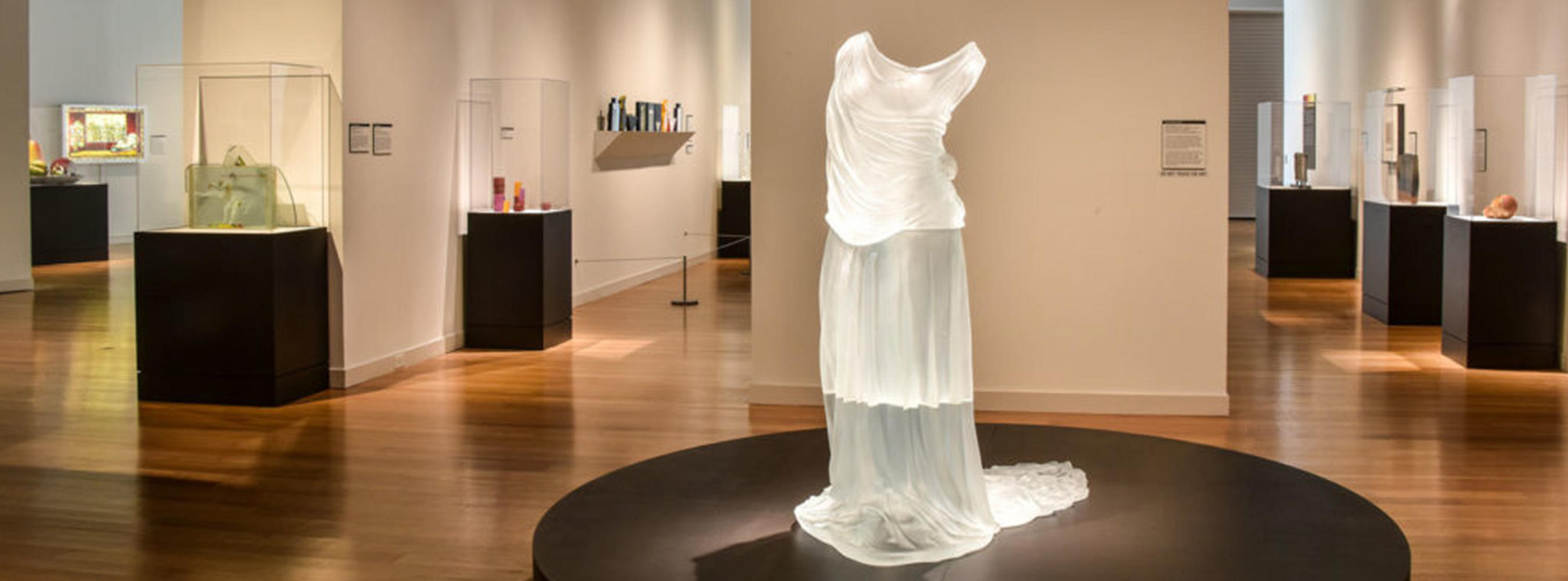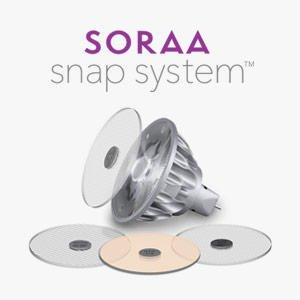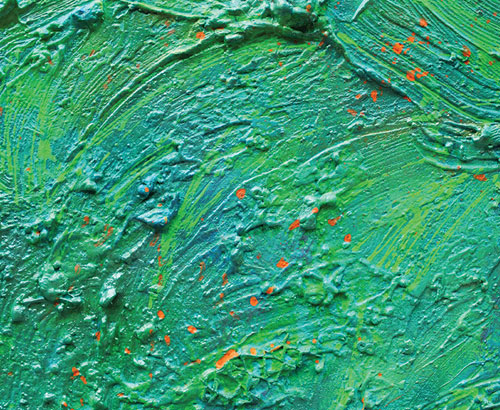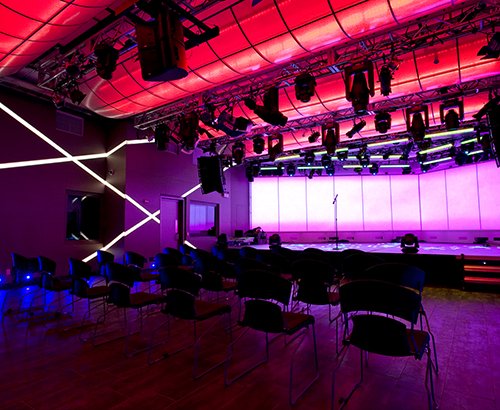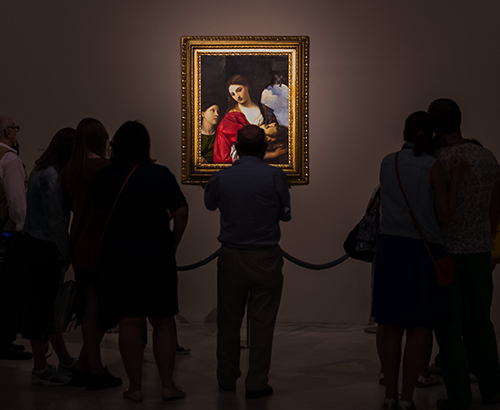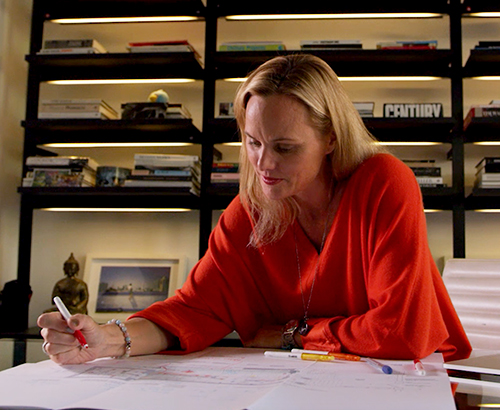I like this
Originally Posted Jun 09, 2017, in The Lighting Resource
Scott Rosenfeld, LC, IESNA, is a lighting designer at the Smithsonian American Art Museum, part of the world’s largest research and museum complex located in Washington, D.C. The museum is home to one of the largest and most inclusive collections of American art.
“Museums really care about lighting design, and they build the necessary infrastructure to do lighting well,” Rosenfeld said. “The other thing about museums is that they serve as a bellwether for other interior environments. If the lighting quality is good enough for an art museum, it’s likely good enough for other applications.”
 Like Rosenfeld, Hannah Crowell specializes in the illumination of beautiful works of art. An exhibition designer at Charlotte’s Mint Museum, Crowell earned her stripes in the theater business, learning about set and lighting design from some of the world’s best.
Like Rosenfeld, Hannah Crowell specializes in the illumination of beautiful works of art. An exhibition designer at Charlotte’s Mint Museum, Crowell earned her stripes in the theater business, learning about set and lighting design from some of the world’s best.
“Lighting is about visibility but also perception,” Crowell said. “At its core, lighting design is about controlling what is light and what is dark to help tell a story.”
Telling a story – that’s the charge for all museum lighting experts, whose illumination of treasured works of art is an art form all its own.
Here are four takeaways from our conversations with Rosenfeld and Crowell:
1. Smart lighting design helps tell the stories of works of art.
If lighting designers are storytellers, how do their stories begin?
Rosenfeld believes lighting adds context to already beautiful works of art. “I always begin by sitting in front of an object and asking questions,” he said. “Why do I care about this thing? What do I love about it? Why is it here? What was the artist’s intent? I formulate answers to all of those questions, and then I light them.
Whether he’s accentuating an oil painting, rendering facial expressions on a sculpture or making glass bottles glow from the inside, Rosenfeld first studies everything an artist’s work offers and then strives to make it look like everything it can be.
“Art museums are largely visual experiences. And if the lighting doesn’t provide the necessary raw data, visitors won’t enjoy those experiences.”
Crowell says the world of museum lighting design is much like theatrical lighting design, except the actors are paintings and sculptures and crafts.
“When we create a museum exhibit, we create a narrative and design a setting for that narrative,” she said. “The difference is that here, we invite the audience onstage and allow them to walk around and become part of the scene.”
In museums, lighting design helps guide audiences as they explore these scenes. Ultimately, it shapes the narrative.
“Lighting plays a major role in determining how people experience art,” Crowell said. “It can either create a wide-open space for self-discovery and exploration, or it can shrink the space such that visitors get a tightly scripted narrative.”
Just like all of the actors in a production play a different role, all artwork has its own unique place in an exhibit; that’s why Crowell never equally lights all of the objects in a gallery. Creative lighting schemes introduce a variety of intensities and light levels to establish a special rhythm.
“It’s a visible dance,” Crowell said. “Where’s the showstopper in the room? Much like theater productions, museum exhibits always have a lead actor. And when that actor needs to be heard, we bump up the light.”
2. Museums and galleries require a unique lighting design methodology.
One of the biggest challenges museum lighting designers face is the sheer number and range of objects they have to consider; even single works can come with a hierarchy of lighting needs.
“Imagine a painting of a beautiful sunset,” Crowell said. “Depending on how I want the viewer to experience this two-dimensional (2D) work, I might spotlight one part and flood others to emphasize areas of contrast.”
Conversely, museum lighting designers approach three-dimensional (3D) objects much like theatrical lighting designers sculpt the human body. These objects provide even greater opportunities for contrast, as designers can choose to darken or fill natural shadows.
When many different objects are displayed in a single exhibit, lighting designers must sometimes light the space so that certain objects are illuminated with bright or dim light, light that is warm or cool, using deep or shallow angles and a variety of fixtures and sources.
Of course, lighting designers also have to consider the environment where the art is displayed. Is the art hung on the wall or enclosed in a glass case? Where is the object label? Is the floor made of tile or wood? Are adjacent objects similar or different? Now, consider that many art museum exhibits change frequently. This means lighting design must be flexible and easy to customize for new objects and collections.
3. Art conservation is crucial.
Conservation might be the concern that most distinguishes the art of art museum lighting.
“Some materials create genuine tension between the desire to display artworks so they look great today and the need to preserve them for future generations,” Rosenfeld said. “For example, watercolors are extremely light-sensitive, as are woods and textiles. Permanent magic markers are also not permanent; in fact, these colors have one of the highest fade rates.
“On the other hand, when materials are not light-sensitive, such as glass, rock or enamel, I can light them up however I’d like.”
LEDs are gaining traction among museums and galleries for several reasons, not the least of which is that they are the safest source for light-sensitive artwork. Compared to other sources, LEDs produce far less ultraviolet (UV) radiation.
Of course, all forms of visible light contain at least some UV radiation, and all visible light damages fragile artwork. That’s why lighting designers strive to illuminate light-sensitive fine art as dimly and for as little time as possible. Strategies include using lower wattages, adding metal screens or using dimmers, preferably via Bluetooth, Dali or DMX, since power line dimming is likely to create flicker.
But it’s a careful balance.
“Light-sensitive objects should be illuminated just brightly enough that people can enjoy them that day,” Rosenfeld said. “If the light is brighter than it needs to be, or if the light is too dim for people to enjoy the object, we’re not using the life of that object as well as we could. This wastes energy as well!
“Lighting is an ethical judgment. When we’re working with precious and fragile objects, we have to make every photon count.”
4. Common lighting mistakes can spoil the museum experience.
Rosenfeld said that track lighting is a natural choice for an art museum, because it provides many points of illumination that can all be individually controlled. But not everyone does it well – and poor execution leads to poor distribution and problems with glare.
“Museum owners must be willing to invest in the cost of regular maintenance as well as installation by experts in manipulating light,” Rosenfeld said. “Otherwise, they shouldn’t install a track lighting system."
High-glare fixtures that create direct glare can be avoided by using strategies like baffles and cutoffs. The artwork, not the lighting fixtures, should always be the brightest objects in the room.
As with many applications, room size also plays a significant role in museum lighting design. Smaller rooms intensify the tug-of-war between mixed media; for example, when ceramics are displayed directly adjacent to textiles, poorly selected or positioned light sources can become mushed together and result in a poor overall lighting scheme. On the other hand, rooms with high ceilings result in lost footcandles; this can hamper visitors’ ability to enjoy the artwork if not lighting is not properly specified.
Sometimes, getting the right look is about taking extra time to check the work. Crowell said that if an installer scales a ladder to mount fixtures and doesn’t climb down to view the artwork from future visitors’ vantage point, the focal point might be too high, creating a distracting scallop on the wall above the artwork.
Art museums may be of the toughest challenges for lighting designers.
“When we view artwork in a museum, we’re almost always seeing it out of the context in which the artist created it,” Rosenfeld said. “Impressionists painted outdoors in 100,000 lux. It’s impossible to replicate that inside a museum, at least not without damaging the artwork.”
But new technologies and techniques are transforming the way we experience some of the world’s greatest treasures, and these technologies are becoming more accessible to museums. Larger galleries are beginning to adopt more tricks from theatrical lighting such as gobos that create interesting textures as well as light-shifting boxes. LEDs are becoming more affordable and offering more choices for design-conscious designers. And much like the artists whose work they illuminate, lighting designers are finding new ways to paint with light.
